Great Fire: The grid system for London that never happened
- Published
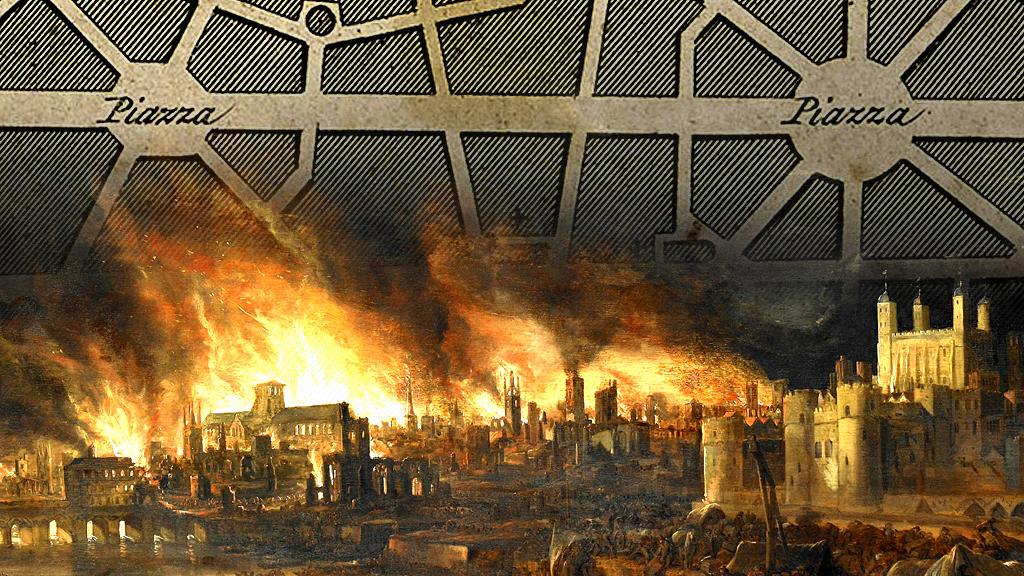
After London's Great Fire - 350 years ago this year - there were radical plans to transform the city. Modern architects have since used disasters as a chance to rebuild in a new way.
Sir Christopher Wren worked quickly.
His ambitious vision for a new London was submitted to King Charles II a little more than a week after the blaze was put out.


Wren's plans feature in a new exhibition, Creation from Catastrophe, at the Royal Institute of British Architects, external.
"We are looking at the opportunities which terrible disasters have offered architects to rebuild cities around the world," says curator Jes Fernie.
Scroll down to see what London could have looked like - and how other places have been transformed after tragedy.

Before the Great Fire, the City of London was a huddled mass of timber-framed buildings.
The view below dates from 1560, with the city stretching from the Tower of London, in the east, to Fleet Street and The Strand in the west.
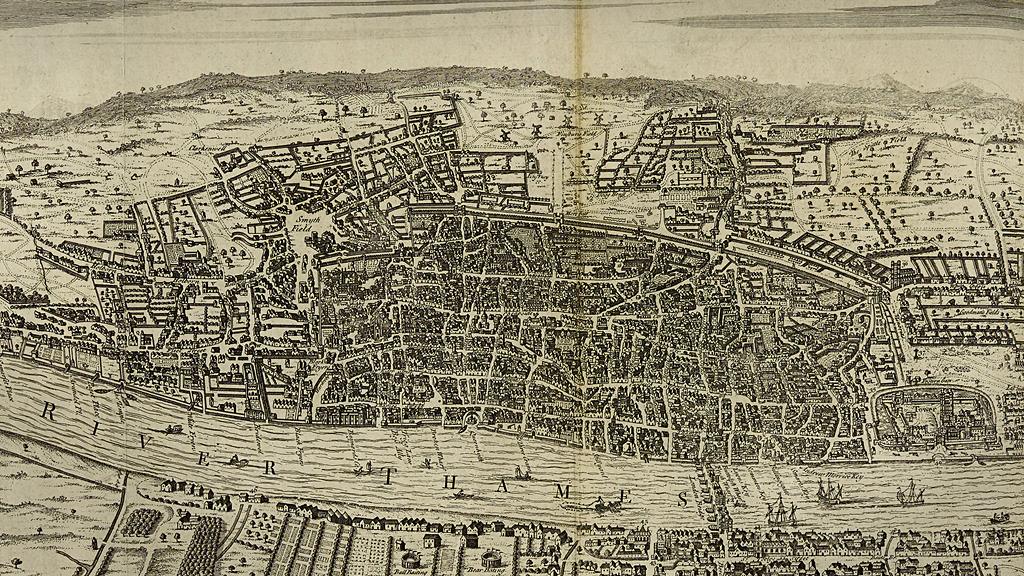
The 1666 fire - which began in a bakery in Pudding Lane - raged for four days, and destroyed most of the medieval parts of the city.

King Charles II invited architects and surveyors to present alternative reconstruction plans, with the proviso that:
"...no man whatsoever shal [sic] presume to erect any House or Building, great or small, but of Brick or Stone."
The exhibition - Creation from Catastrophe - looks at five of the plans submitted to build a new London.

RICHARD NEWCOURT'S RELIGIOUS RECTANGLES
"A series of public squares, and in the middle of each one a church and churchyard. It can be extended over and over again - it's a perfect grid plan," says curator Jes Fernie.
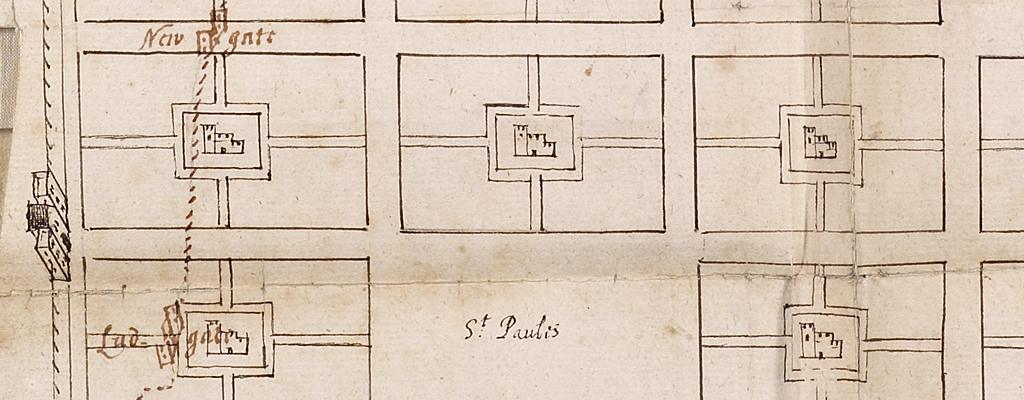
Some architectural historians believe Newcourt's idea formed the basis of the plan for Philadelphia - which in turn became the model for the American grid system.
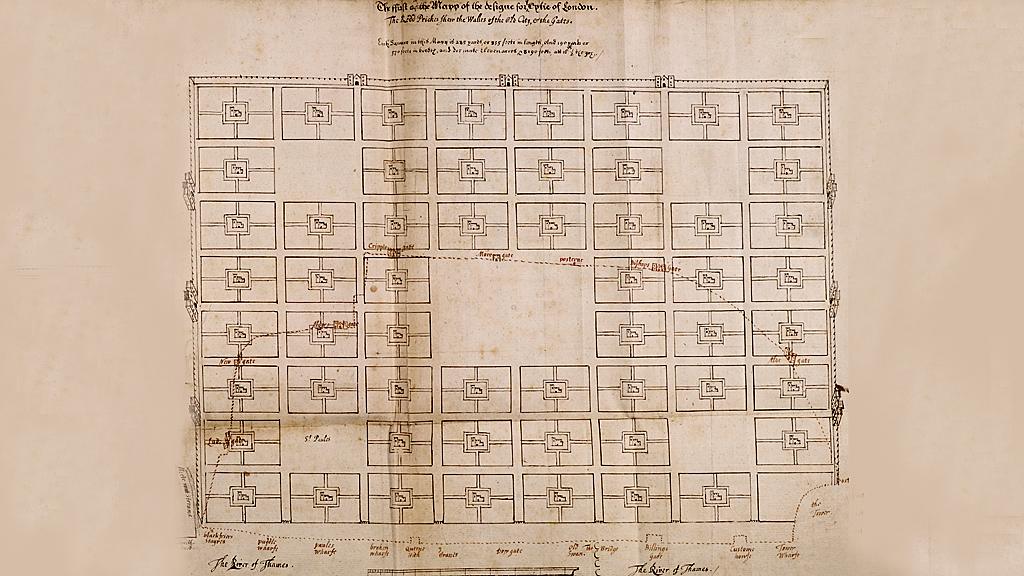

VALENTINE KNIGHT'S TOLL CANAL
This is the proposal from army captain Valentine Knight - with long east/west streets and occasional north/south cross-sections.
"But also a new canal," says Fernie, "for which the king could charge a toll, to raise money to help rebuild London after the fire."
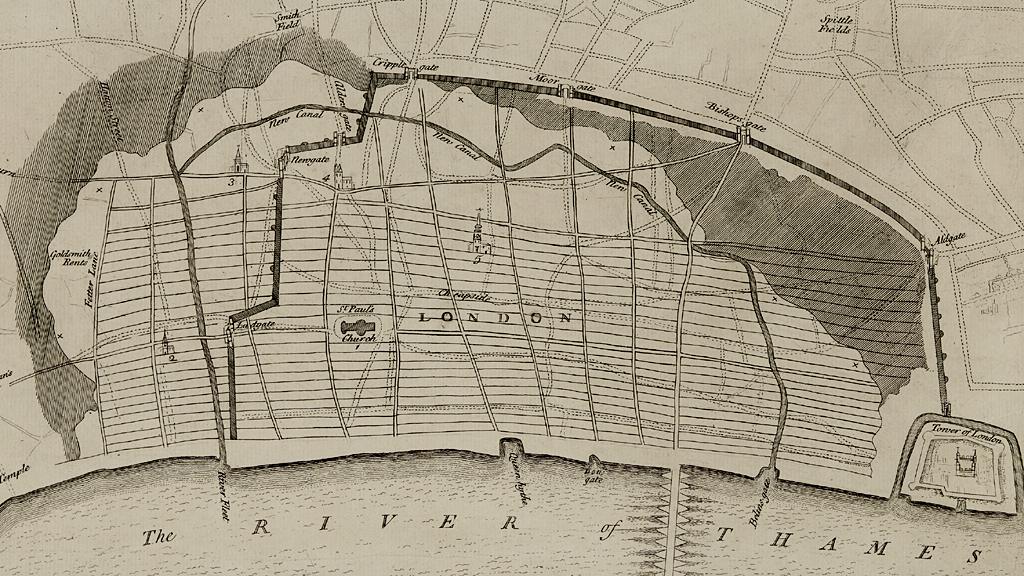
If built, the canal would have met the River Fleet in the north-west, emerging in the Thames just to the west of the Tower of London.
But Charles II was not keen. He had Knight arrested for suggesting that the king might benefit financially from such a calamity.

ROBERT HOOKE'S CHECKED GRID
This next plan is attributed to philosopher and surveyor Robert Hooke - but the authorship cannot be 100% verified.
The un-shaded section on the map below shows the area destroyed by the Great Fire. The inset shows Hooke's radical vision.

His grid system would have been made up of broadly similar-sized blocks - a pattern subsequently used in other cities, such as Paris and Liverpool.
There would be four large market squares, with churches (marked "c" on the plan) every few blocks.


JOHN EVELYN'S ITALIAN AVENUES
Sir John Evelyn - today best known for the diaries he wrote - held prominent public positions under Charles II.
He travelled widely, particularly in Italy and France, and he wanted London to be rebuilt according to an Italian-style radial plan - with piazzas and broad avenues.
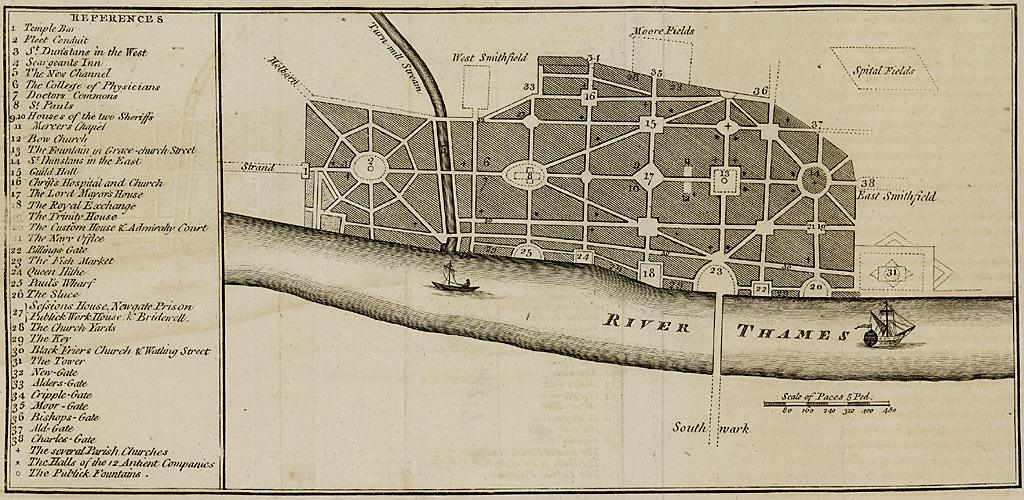

CHRISTOPHER WREN'S PARISIAN VISION
Wren - best known for his reincarnation of St Paul's Cathedral after the fire - also had a wider vision for London.
Similar to John Evelyn, his plan would have seen narrow medieval streets replaced with wide avenues spreading out from piazzas.
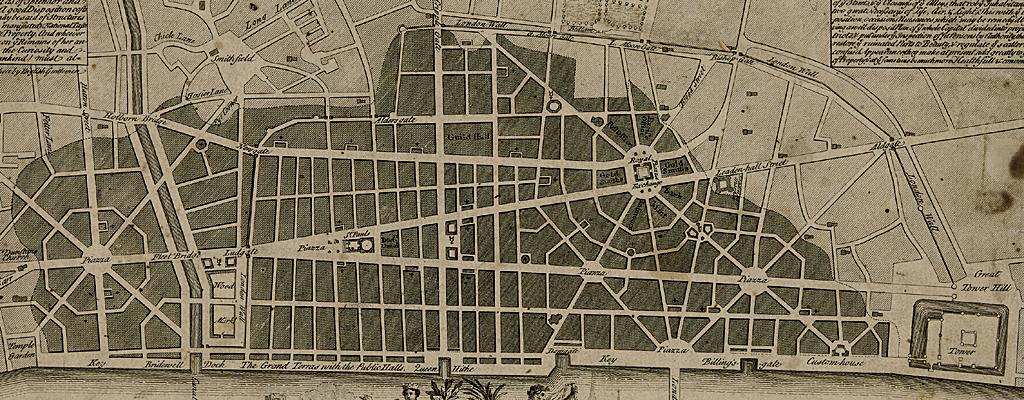
It was a formal street system that referenced his studies of Paris and Rome.

But, as with the other four proposals above, most of Wren's ideas did not become reality - mainly due to lack of money and complex land ownership issues.
London's buildings were, in the main, rebuilt on their original plots - but using brick and stone instead of timber.

The earthquake which struck the Portuguese capital in 1755 killed tens of thousands of people.
Like London before the Great Fire, the city of Lisbon which stood before the quake was made up of narrow winding streets - "built around religion, not commerce", says Jes Fernie.
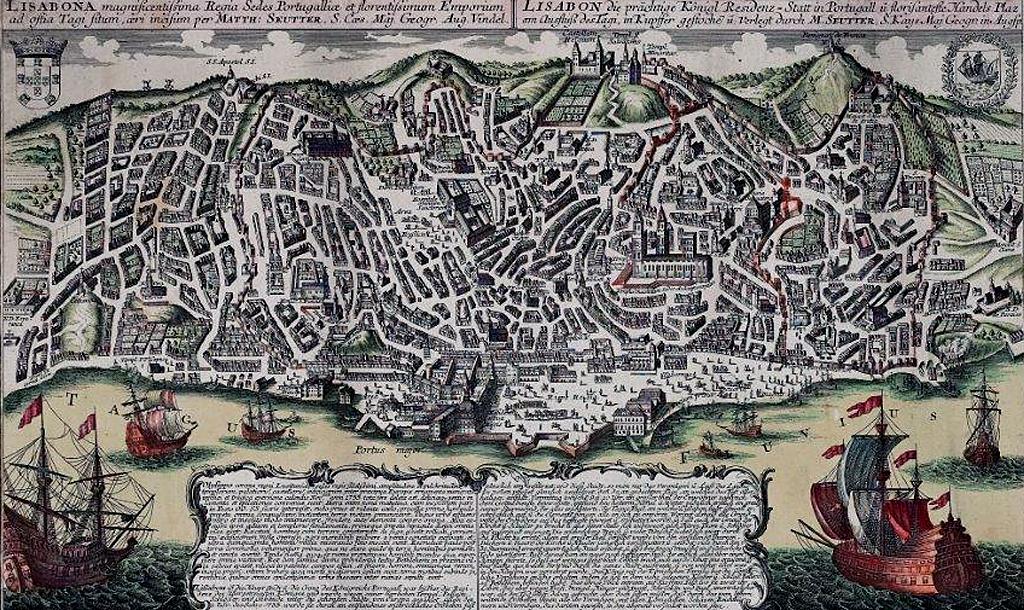
The tragedy left King Joseph - and his Secretary of State, the Marquis of Pombal - with the opportunity of a clean slate, or in Latin "tabula rasa".
They decided to rebuild the city centre completely - using a grid system.
"Lisbon was positioning itself on the world stage," says Fernie. "It was saying 'we are rational, sturdy, stable and visionary'."

"Lisbon also became one of the first cities to seismically test its buildings," says Fernie - albeit in a rudimentary fashion.
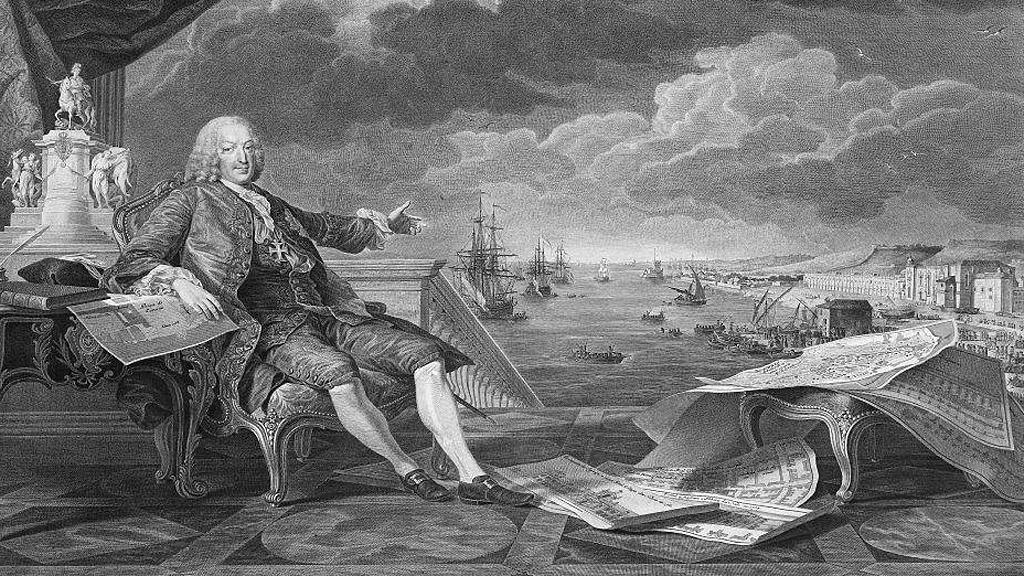
And above, the Marquis of Pombal - the driving force behind the reconfiguration of Lisbon - invites you to appreciate the new city.

"There's no doubt that the Great Chicago Fire of 1871 played a big part in putting the Midwest US city on the world stage," says Jes Fernie.
The blaze, at the end of a long dry summer, paved the way for huge city expansion and the development of a new architectural style - the Chicago School.
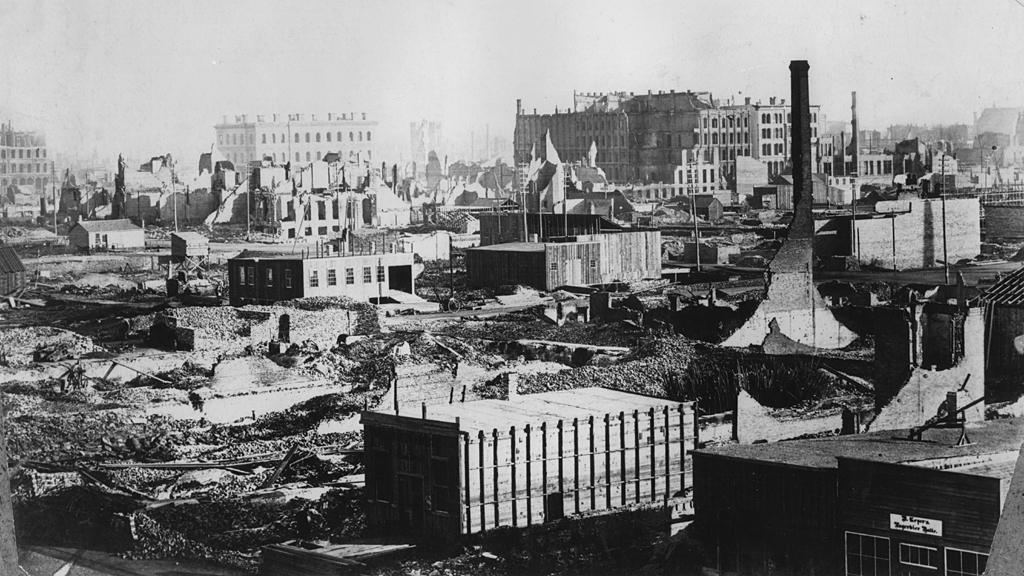
"This is a really nice example of how real estate offices sprung up in the days after the fire," says Fernie of the photo below.
"It was very quick. So much about commerce and opportunity."
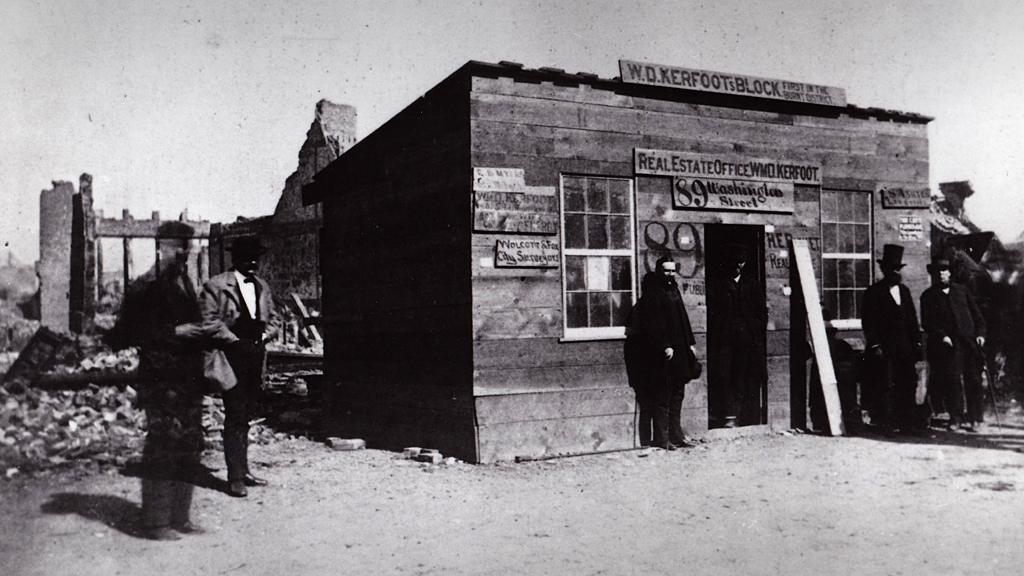
Daniel Burnham was the shrewd PR man, architect and master planner commissioned by the authorities to reconfigure the city.
"He had to sell his vision," says Fernie, "so he commissioned incredible watercolours."
"He was very much looking to Paris - there were boulevards and grand avenues - to give the impression of civilised life."
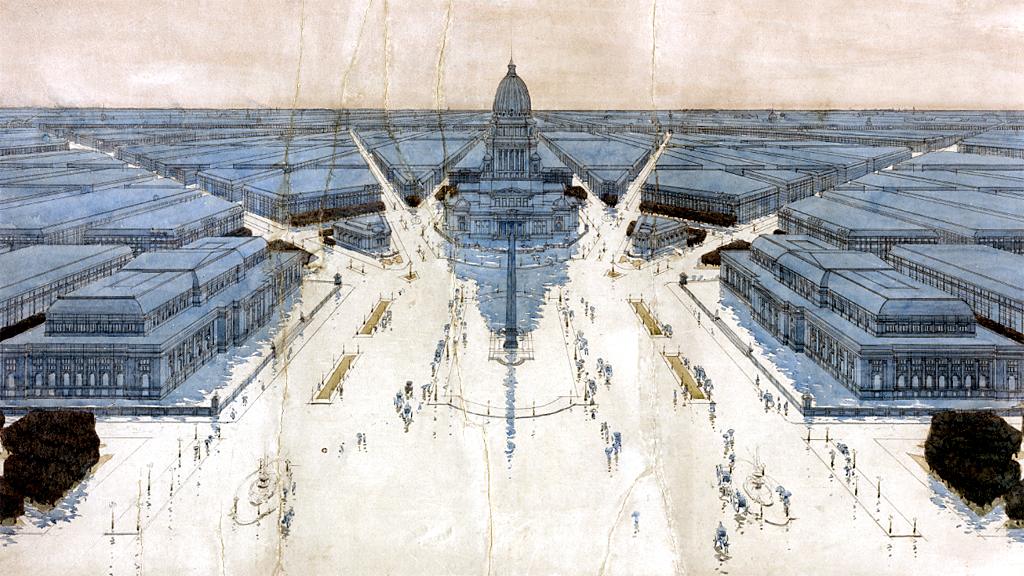
Fireproof metal frames for Chicago's new buildings helped lead to the first skyscrapers.
The next image shows the extent of the 1871 blaze - and an early high rise building in downtown Chicago, designed by Daniel Burnham's firm.

"Only about 20% of his plan was realised, but what is significant is the impact it had on the way Chicago was viewed across the world."
The area along the shore of Lake Michigan was one of Burnham's visions which did become reality.
Locals could promenade along the lakeside - which was built from debris from the fire.
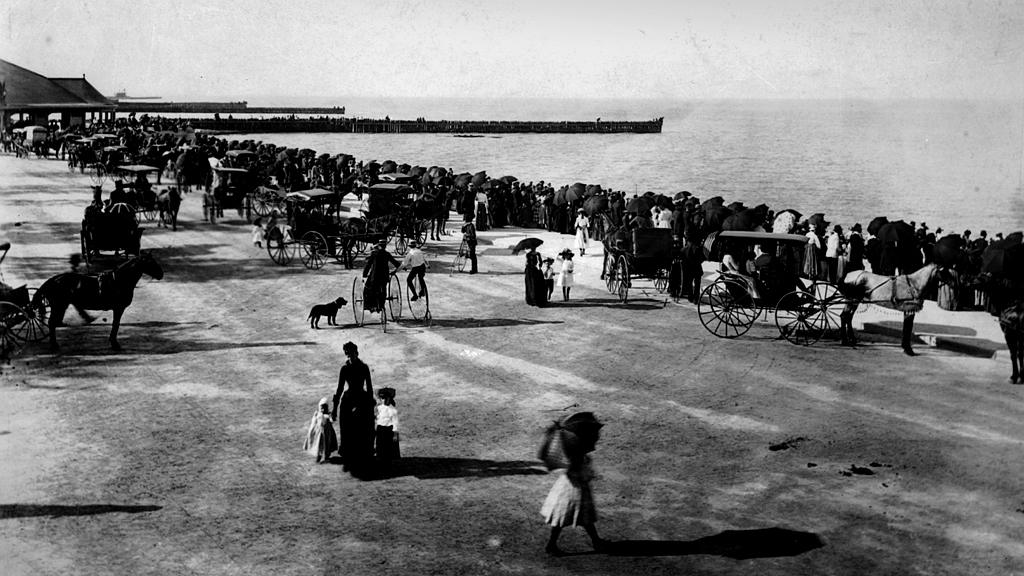


The second part of the Riba exhibition - Creation from Catastrophe - looks at how current communities under threat can adapt to be ready for future challenges.

One example looks at Makoko floating school in a poor area of Lagos, Nigeria - where many people live on stilt structures above water.
Created by NLE Architects, it is half-building, half-boat.

"It's about developing a stable structure that will cope with the challenge of rising sea levels," says curator Jes Fernie.
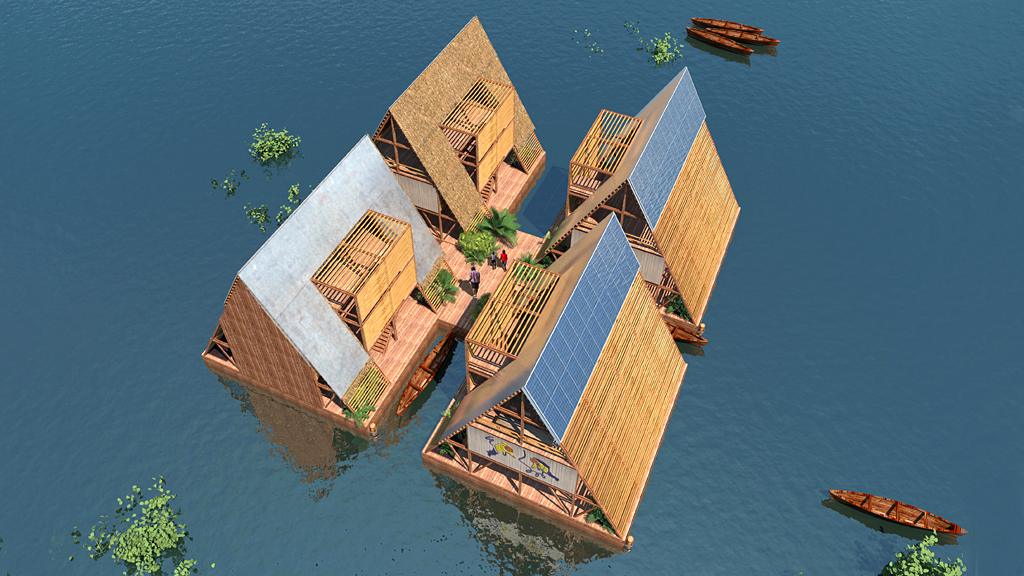
"This isn't just about looking at Africa and thinking that's what they can do there," she concludes. "These ideas can be embraced in other parts of the world."
"We need to be thinking about the different ways that architecture will have to work with nature in the future."
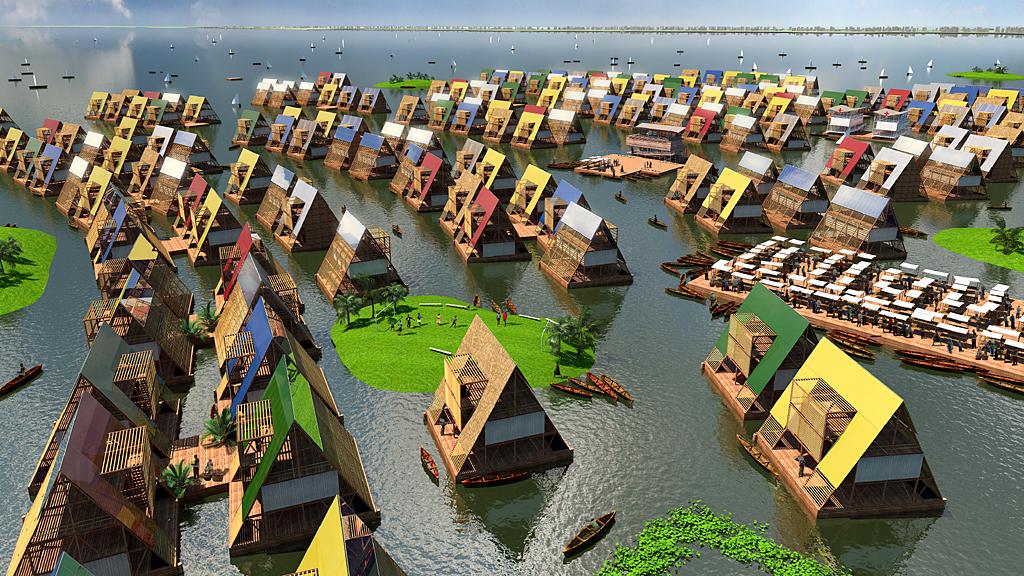
All images subject to copyright.
Subscribe to the BBC News Magazine's email newsletter to get articles sent to your inbox.

